Last updated: April 7, 2025
Article
Podcast 074: Job Hunting Tips for Historic Preservation
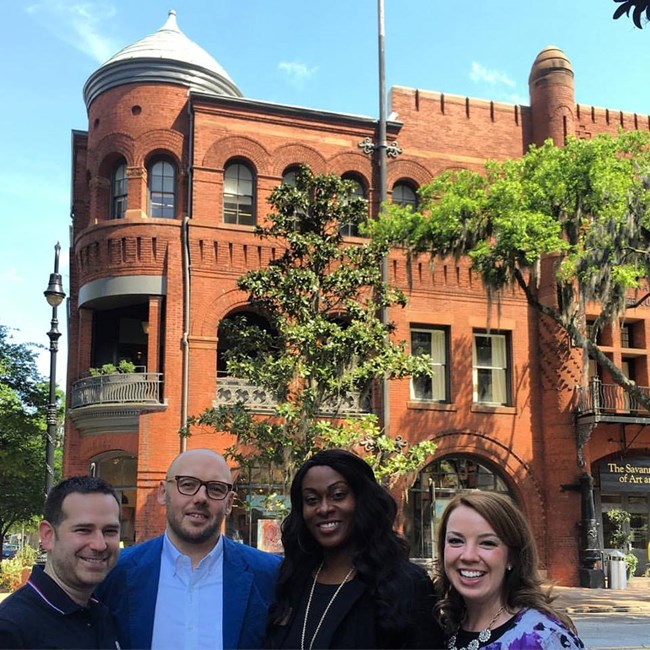
Todd Heiser
SCAD: Savannah College of Art and Design
Maggie O’Neill: Hi, and welcome to the preservation technology podcast. I’m Maggie O’Neill O’Neal, and today I’m at the Savannah College of Art and Design in Savannah, Georgia, with Chrissy Terry Terry. Chrissy Terry is the assistant director of Career and Alumni Success (CAS) here at SCAD. Chrissy Terry, why don’t you tell us a little bit about yourself and a little bit about what you do at SCAD?
Chrissy Terry: I’ve been here at SCAD for over 8 and a half years. I love what I do. In our office, we basically assist students and alumni with their career preparation. It can be anything from resume writing, cover letter writing, to, “I have 2 offers, I just need a little assistance with trying to figure out which position would be the best fit for me, and everything in between.” I’m one of maybe about 4 or 5 team leaders, is what we’re called, and I supervise a team of 3 including myself. We work with students and alumni whose majors fall within the school of building, arts, and liberal arts.
Maggie O’Neill: Finding a job in preservation can sometimes be difficult, especially when you’re just getting your foot in the door. In your opinion, what makes job hunting for historic preservation a little bit more different, or perhaps a little more difficult, than a normal job?
Chrissy Terry: Of course, as you know, at SCAD, there are some majors. I’ve just used graphic design, for example, where there are plethora of positions out there. People always looking for graphic designers to do different things. Preservation’s a lot different. When I’m working with students and alumni, I always tell them that one, you’re going to be working with really unique employers, potential employers, organizations. It’s not the typical where you may find this massive list, even though there is preserving that and there is some other great lists out there that you can use. Just the job search is different, so because some of these offices are small, I tend to say it’s a little bit more personable. That’s a benefit in that it’s a small town. It may mean that there may be less than 5 or it could be a office of 10 people that work in the organization. You just have to look at all the different options that are out there, in terms of looking for work, so beyond just looking for and applying for things online, you have the option of being able to physically go to offices. A lot of networking, and of course, it’s definitely key when you are looking for a job opportunities too. I tell students to use all the different avenues of job search that are available.
Networking
Maggie O’Neill: I know in my past experience, networking has been how I’ve gotten most of my jobs in preservation. Obviously that’s important, but how important is it for preservation?
Chrissy Terry: I would say it’s 110% important for all jobs. It’s really going to be important for individuals that are in careers like preservation, because it is such a unique market and there aren’t a lot of opportunities out there that you may know about, and these organizations are small, and they may not post things on the web. You really have to get to know professionals that are in the industry. I always tell students and alumni, “Reach out to other students and alumni.”
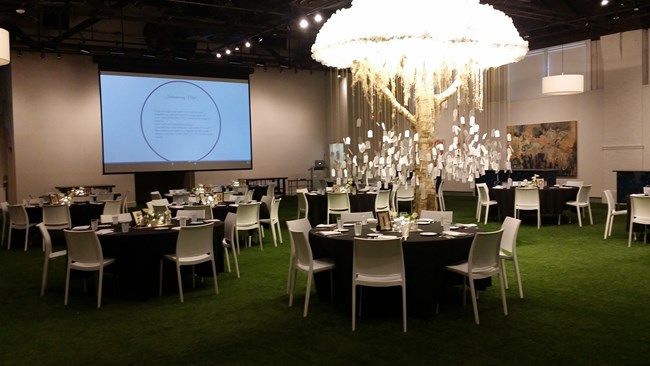
Maggie O’Neill
We just did a panel of some awesome alumnus from SCAD who have had several internships that were jobs as well. Really just looking on their LinkedIn profile, reaching out to them, seeing if they can schedule a informational interview. Just to sit down and chit-chat a little bit over coffee or tea. All of that is going to be important.
Networking, it’s not a 1-way street. It definitely has to be a 2-way street, so it’s building that relationship. It’s building your network. People don’t realize that their network is all around them. It could be your doctor who may know somebody that works in a preservation office, or a planning office for the city, or what have you. There’s always somebody that’s connected to somebody else that could be a benefit to expand on your network.
Maggie O’Neill: When you’re teaching students or young professionals how to network, I know that’s something that a lot of my peers have felt uncomfortable with. Getting their foot in the door, beginning to network. What are some of your suggestions when you start networking, and the most effective ways to network?
Chrissy Terry: Most of the time, when people hear the word network, they automatically are thinking about, “Oh, I have to talk to strangers, people I don’t know.” I always tell students to practice in class, in terms of speaking up and talking and getting comfortable with really just being able to communicate. It comes down to that. Whenever there are opportunities in the local area, or at SCAD, and they’re able to being practice some of their networking skills, I think that’s always a great place to start, because it’s a little less intimidating. As you would going to National Trust Conference. Even though I had enjoyed my time there, I thought everybody was really nice and personable.
Some people may be intimidated and scared by entering a large room and really just not knowing where to go. The best places to get the conversation started, though, are usually at the food table. Whenever you’re at an event, and there’s like hor d’oeuvres or some type of food, buffet, that’s the strategy that I’ve used. I still consider myself a young professional, but when I was getting going. Really just saying, “Hello, hi, where are you from? I’m from so-and-so.” The conversation will just start there. It’s really just about talking in general, using the environment that’s around and taking advantage of those situations.
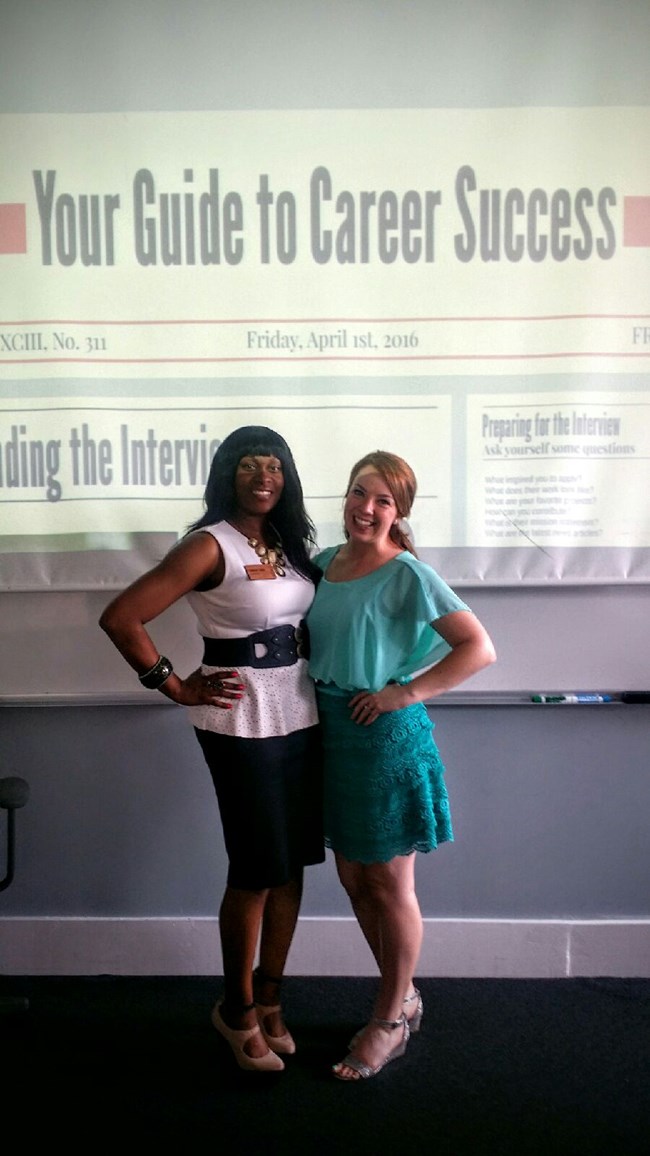
Maggie O’Neill
Maggie O’Neill: At smaller events where you can practice where you can practice networking, that’s often where you can get your foot in the door in preservation, because they’re going out and socializing with people and getting involved in local communities or any organizations that you want to, are some of the easiest ways to make some connections or even potentially land some internships or some informational interviews.
Chrissy Terry: Exactly. Preservation, because of what preservation is advocating for, the community, that I’m sure that they would have events where could come, that will be less intimidating than going to a conference the first time and really not knowing who to talk to. Really just seeing what local events are going on, and really just putting yourself out there. Sometimes people, when they’re going to networking events, in their mind they have a number. “Oh, I need to interact with this many people,” but that may not be the case. Just meeting 1 new person, that’s an addition to your network. People just have to get those things out of their mind with, “Oh, I got to meet with so many people! I got to introduce myself to so many people! I got to talk, have all these long conversations with so many people.” That’s not the case at all.
Maggie O’Neill: Depends a little bit. Now, in theory, we’ve made some connections. We’ve seen some job postings. Now we want to apply for things. What are some of the things that you should have ready when you want to start to apply for things?
Job-Specific Resumes
Chrissy Terry: Traditionally, the resume, cover letter, and having references on the side would probably suffice, but now, here at SCAD, a lot of our students have some type of design aesthetic. It’s always good to potentially have some work samples that you can show the employer. I think a lot of them that what really just set those applicants above the rest, because most people are thinking, “Well I don’t have anything to show,” but you do. You just have to. You’re out there in the field, you’re taking pictures of properties that you’re working on. You’re documenting. You are doing research, and a lot of these things, they aren’t just stuck in the head, so there are some type of physical components to it.
Really just putting it together, nice and neat, and really just being able to bring those and share those materials with the employer. Resume, cover letter, of course, which you would definitely make sure you differentiate your cover letter so it speaks to the position and the company that you’re applying for. You never want to send out a generic cover letter that doesn’t look good. Make adjustments to your resume. You may not have one resume. You may have multiple.
Maggie O’Neill: Personally I have about 4.
Chrissy Terry: You should have different versions of your resume. Every resume is not going to fit each position. You also want to have business cards because when you’re at those networking events, you’re not going to take resumes and cover letters to a networking event. I’ve saw those things before, but it doesn’t look good. You really want to be exchanging your business cards, and then like I said, portfolio, tangible, and digital portfolio. You want to have a variety of different ways. I’ve saw some preservation students, and architectural history students who have had blogs and they’re documenting things. Think outside of the box. Really think about the times and where the job search, where that whole area is going now.
Maggie O’Neill: In your line of work you must come across a lot of job postings for preservation, or you see a lot of these things. Is there anything you come across on job postings frequently that you think is a good skill for students to have?
Chrissy Terry: I’ve started seeing various software programs. Whether it’s Photoshop, End Design, Illustrator, some of the other more architectural type of programs, I’m starting to see those. Of course, in addition, the research and the key preservation related skills on there as well. Really just being able to have strong communication skills is going to be key as well. I’m trying to think if there are, besides those, I’m really seeing more software. Software.
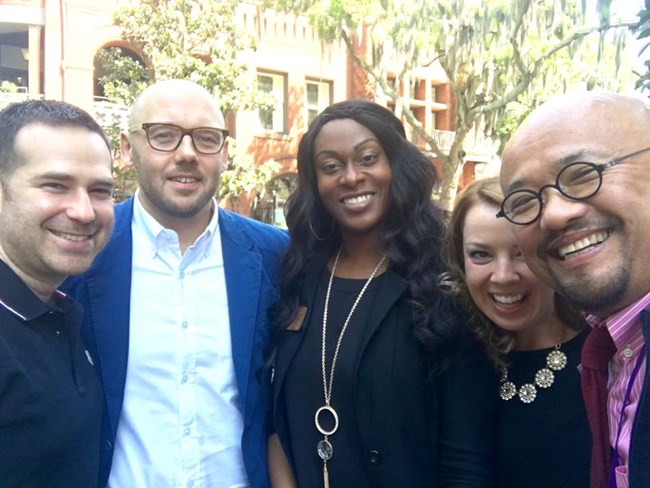
Maggie O’Neill
Maggie O’Neill: Do you have any final words of advice for students who are looking for jobs? For students or young professionals who are looking for jobs, or looking to enter the field of historic preservation?
Chrissy Terry: I do. I definitely would say, stay on top of what’s going on in the industry. There are a lot of free resources and what I mean by that is, and I keep going back to LinkedIn because of this really vital component to job search today. In terms of staying abreast of what’s going on in the industry, and making connections, joining those groups, you never know who you may connect with through that platform. There are several different ways that you can connect with people without having to send a personal message, per se, but it’s always good to send a personal message, but it’s certain parts of LinkedIn that you can send a request without having to feel uncomfortable about, “Oh, I don’t know this person really, but I’m stating that.”
Also, be open minded. Really be open minded and be patient, because while you may have peers that landed opportunities right away, immediately, that may not be the case. I’ve been working with a SCAD alumna, she graduated in 2014, and when she first graduated, she may have applied to a few, a handful of positions, and so she had a job but it wasn’t in preservation. She reached out to me, probably some months ago, and we’ve been connecting and we revised her resume. Lately, she’s been getting a lot of interviews from that just by the materials. Really make sure that your materials are a great representation of you, because we made some really great changes to her resume, and she’s been having huge success since then. Stay connected with your professors, as well, and definitely let them know if you’re interested. People don’t know that you are interested in a position that you see if you don’t let them know. Stay connected.
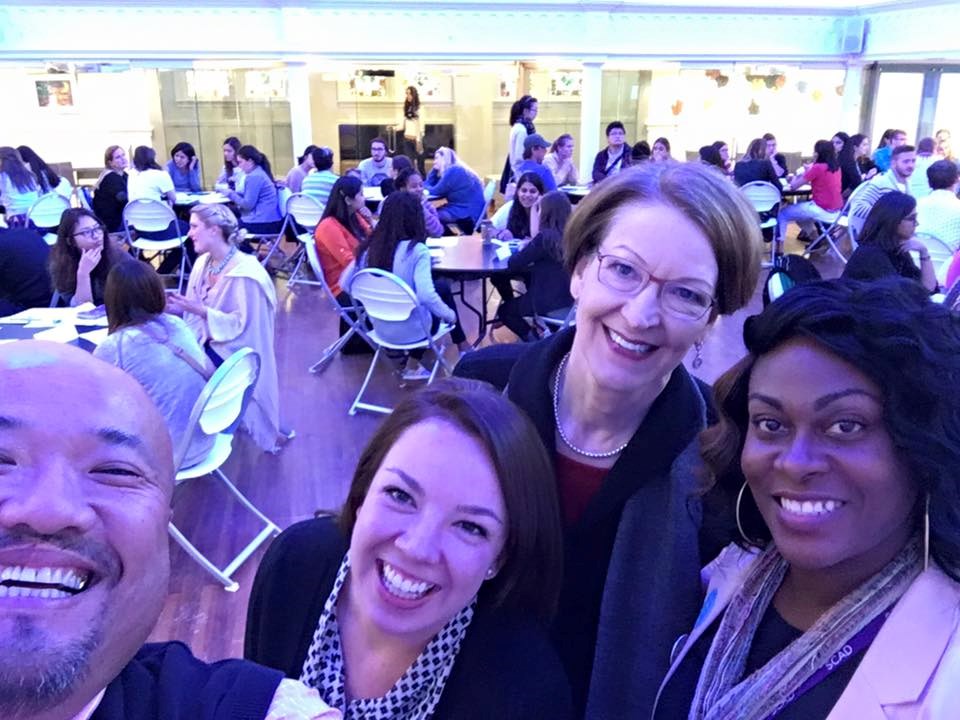
Savannah College of Art and Design (SCAD)
Maggie O’Neill: Thank you so much for talking with us, Chrissy Terry, and I’m sure the advice that you’ve handed out today will be so helpful to so many people.
Chrissy Terry: Thank you so much, Maggie O’Neill. I enjoyed it.
Read other Preservation Technology Podcast articles or learn more about the National Center for Preservation Technology and Training.
